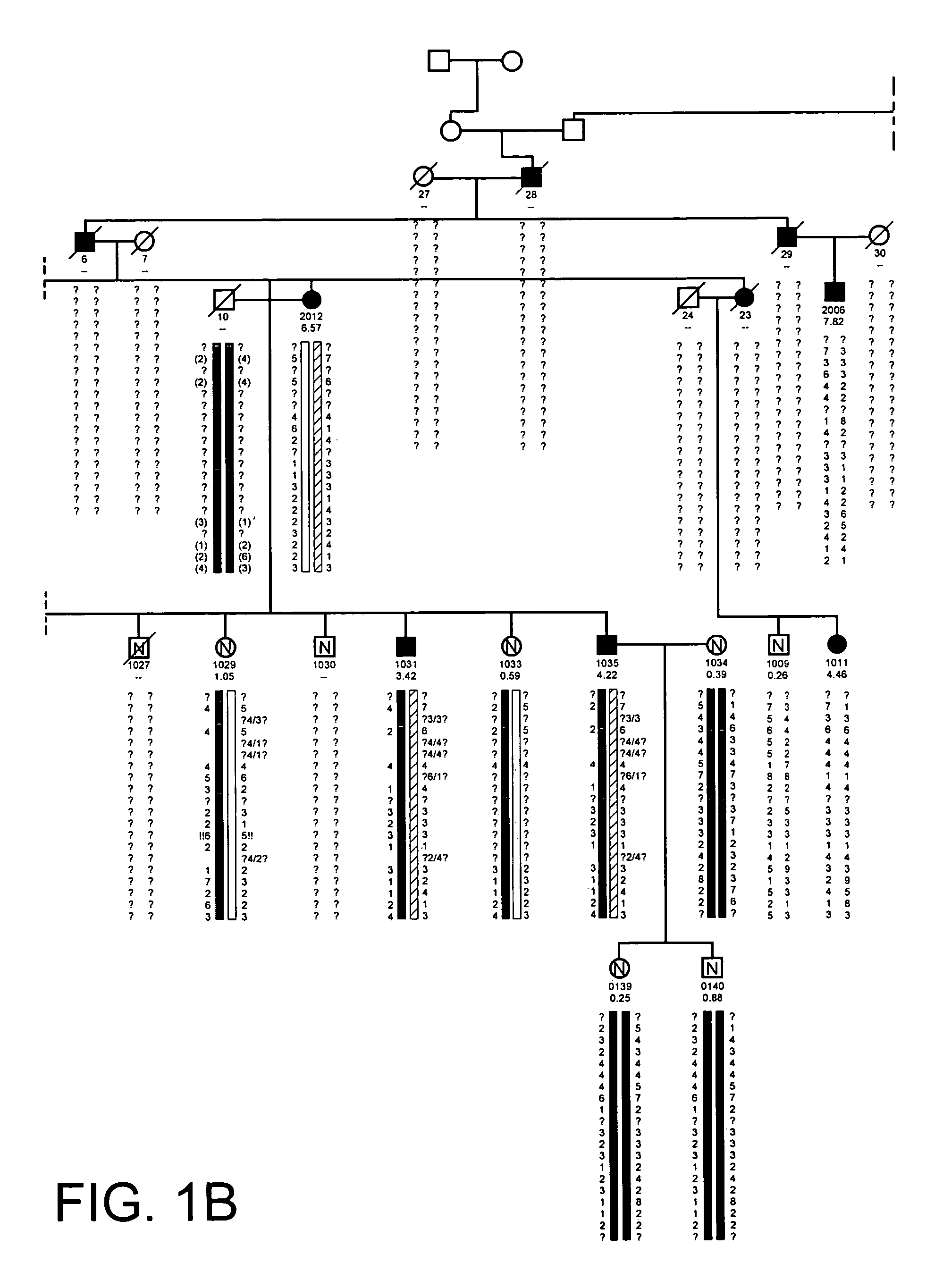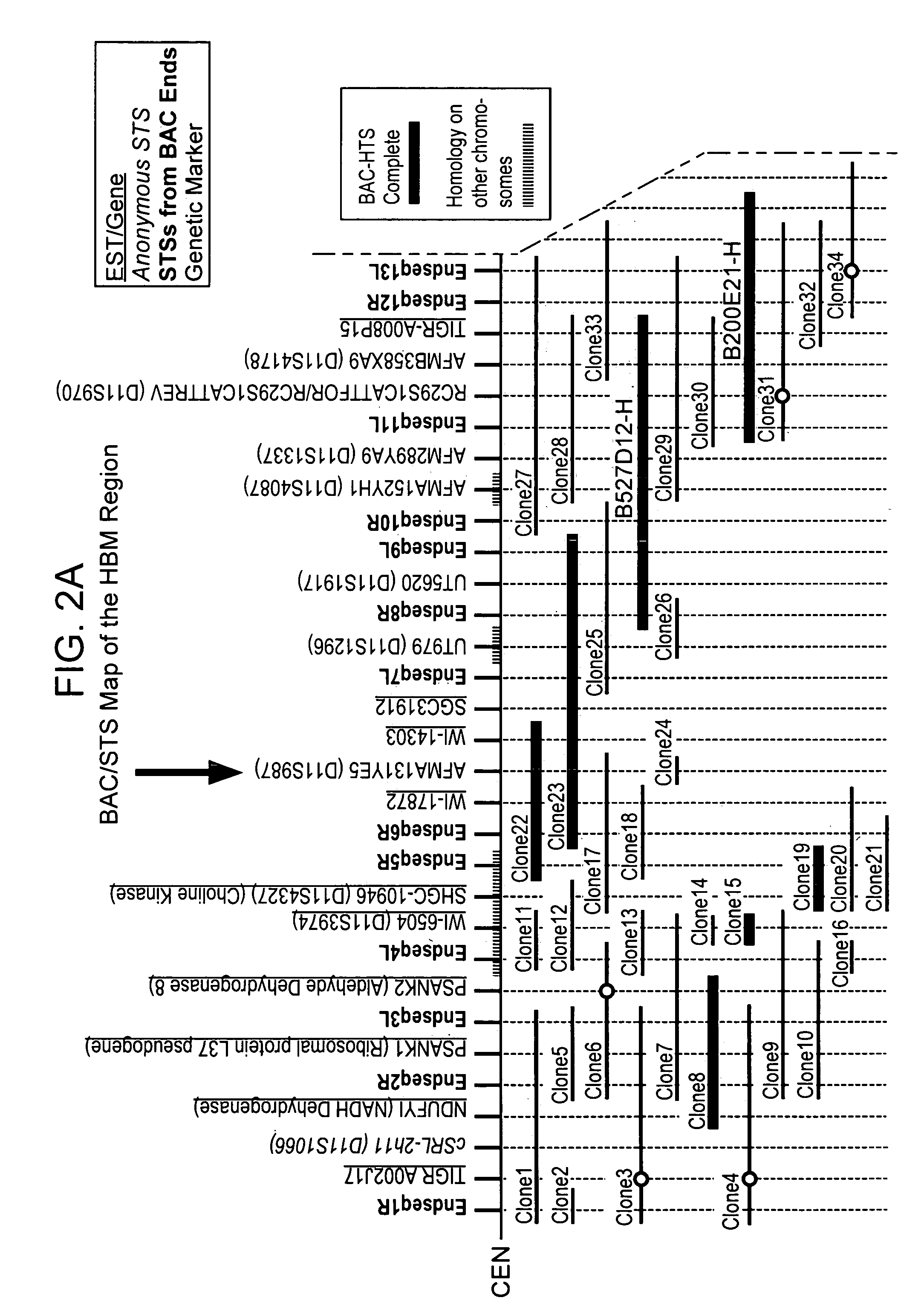Transgenic animal model of bone mass modulation
a bone mass and transgenic technology, applied in the field of gene expression, genomics and molecular biology, can solve the problems of increasing bone resorption and formation, increasing the risk of aging, and net loss of bone mass, and achieve the effect of accelerating the sequencing of the autosomal dominant gen
- Summary
- Abstract
- Description
- Claims
- Application Information
AI Technical Summary
Benefits of technology
Problems solved by technology
Method used
Image
Examples
example 1
[0628]The propositus was referred by her physicians to the Creighton Osteoporosis Center for evaluation of what appeared to be unusually dense bones. She was 18 years old and came to medical attention two years previous because of back pain, which was precipitated by an auto accident in which the car in which she was riding as a passenger was struck from behind. Her only injury was soft tissue injury to her lower back that was manifested by pain and muscle tenderness. There was no evidence of fracture or subluxation on radiographs. The pain lasted for two years, although she was able to attend school full time. By the time she was seen in the Center, the pain was nearly resolved and she was back to her usual activities as a high school student. Physical exam revealed a normal healthy young woman standing 66 inches and weighing 128 pounds. Radiographs of the entire skeleton revealed dense looking bones with thick cortices. All bones of the skeleton were involved. Most importantly, th...
example 2
[0630]The present invention describes DNA sequences derived from two BAC clones from the HBM gene region, as evident in Table 8 below, which is an assembly of these clones. Clone b200e21-h (ATCC No. 98628; SEQ ID NOS: 10-11) was deposited at the American Type Culture Collection (ATCC), 10801 University Blvd., Manassas, Va. 20110-2209 U.S.A., on Dec. 30, 1997. Clone b527d12-h (ATCC No. 98907; SEQ ID NOS: 5-9) was deposited at the American Type Culture Collection (ATCC), 10801 University Blvd., Manassas, Va. 20110-2209 U.S.A., on Oct. 2, 1998. These sequences are unique reagents that can be used by one skilled in the art to identify DNA probes for the LRP5 gene, PCR primers to amplify the gene, nucleotide polymorphisms in the LRP5 gene, or regulatory elements of the LRP5 gene.
[0631]
TABLE 8ATCCSEQ IDLengthContigNo.NO.(base pairs)b527d12-h_contig302G9807205 3096b527d12-h_contig306G980720626928b527d12-h_contig307G980720729430b527d12-h_contig308G980720833769b527d12-h_contig309G98072097204...
example 3
[0632]Methods of Using Explant Cultures from HBM Overexpressing Transgenic and Non-transgenic Mice.
[0633]The use of transgenic animals of the invention for the identification of surrogate markers for the HBM phenotype and putative targets for bone mass modulation therapies and drugs by the methods of the invention and the identification and characterization of genes related to HBM through transcriptional profiling is demonstrated, for example, in calvaria and tibia explant cultures.
[0634]Calvaria and tibia were obtained from neonatal (12-day-old) mice, including transgenic mice expressing HBM under the bone specific type I collagen promoter (Line 19). Calvaria were pooled from 4 transgenic and 4 non-transgenic mice and digested with collegenase. The digests were plated in culture. Calvaria cultures were maintained with or without ascorbic acid and beta glycerol phosphate for 19 days. RNA was isolated at day 19.
[0635]Bone marrow stromal cells were flushed out of tibia and the tibias ...
PUM
| Property | Measurement | Unit |
|---|---|---|
| bone density | aaaaa | aaaaa |
| bone strength | aaaaa | aaaaa |
| bone mass | aaaaa | aaaaa |
Abstract
Description
Claims
Application Information
 Login to View More
Login to View More - R&D
- Intellectual Property
- Life Sciences
- Materials
- Tech Scout
- Unparalleled Data Quality
- Higher Quality Content
- 60% Fewer Hallucinations
Browse by: Latest US Patents, China's latest patents, Technical Efficacy Thesaurus, Application Domain, Technology Topic, Popular Technical Reports.
© 2025 PatSnap. All rights reserved.Legal|Privacy policy|Modern Slavery Act Transparency Statement|Sitemap|About US| Contact US: help@patsnap.com



